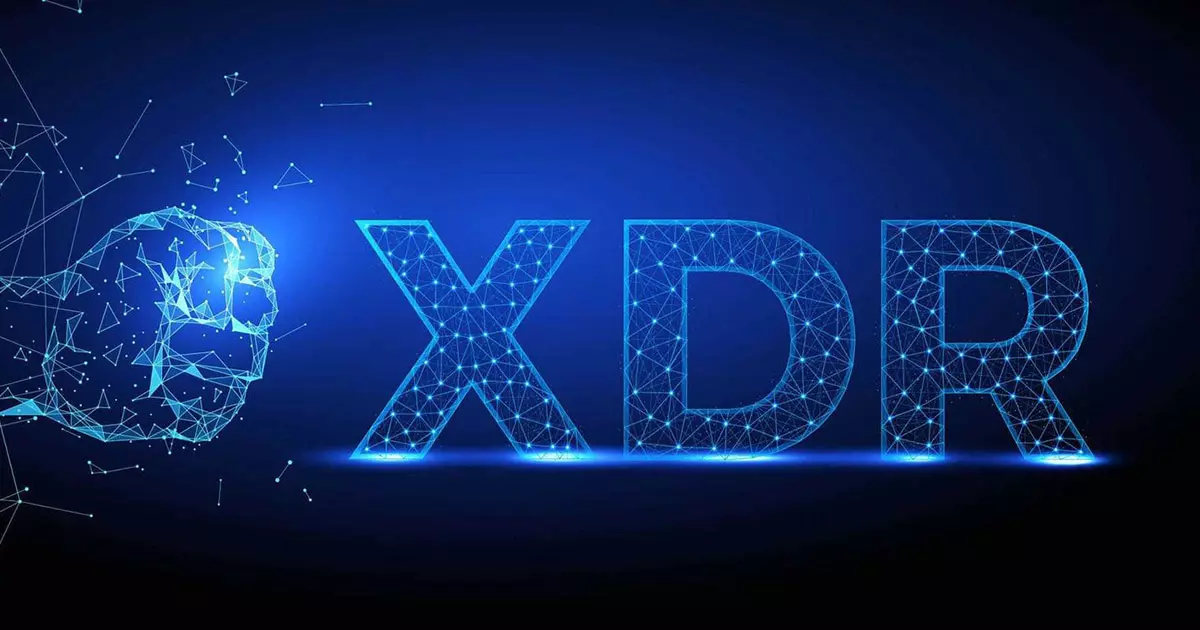Introduction to XDR
As cyber threats grow in both sophistication and frequency, organizations are increasingly seeking comprehensive security solutions that provide robust, unified protection across every facet of their digital footprint. Traditional security tools—which often focus narrowly on specific vectors such as endpoints, networks, or the cloud—are frequently siloed, working in isolation without visibility into the broader threat landscape. This approach leaves significant gaps, making it challenging to identify and respond to threats that move laterally across different parts of the IT ecosystem. XDR (Extended Detection and Response) bridges these gaps by integrating security data and controls from multiple sources, creating a unified and coordinated defense against advanced attacks. This enables security teams to act with greater precision and speed, facilitating more effective threat detection and incident response, even when attackers employ sophisticated, multi-layered techniques.
Unlike standalone security products, which often generate fragmented and incomplete alerts, XDR empowers organizations to correlate signals and data from endpoints, networks, servers, cloud workloads, and messaging systems into a single context-rich environment. This holistic perspective not only enhances the accuracy and speed of threat detection but also simplifies ongoing security management for IT teams. The result is a consolidated and cohesive approach to security operations that offers better protection against evolving and increasingly formidable cyber risks.
Key Components of XDR
XDR consolidates various essential security functionalities into a single, integrated framework. This holistic architecture offers operational and security-specific advantages unmatched by standalone point solutions. Core components of XDR include:
- Data Integration: XDR aggregates and correlates telemetry and logs from endpoints, servers, cloud platforms, networks, and applications. By collecting security data from across the entire infrastructure—including remote devices, SaaS applications, and on-premises systems—XDR ensures that attacks are detected regardless of where they originate. This comprehensive data integration allows for earlier detection of attack campaigns that might otherwise go unnoticed by isolated systems.
- Advanced Analytics: Utilizing artificial intelligence and machine learning techniques, XDR analyzes vast amounts of incoming data to detect suspicious behaviors, uncover hidden anomalies, and link related events. These analytics deliver deeper threat insights, reducing manual investigation time and surfacing new attack tactics more quickly than legacy tools could ever achieve.
- Automated Response: XDR platforms can execute pre-defined policies to contain, mitigate, or remediate threats automatically. This reduces the time between initial threat discovery and enforcement, curbs the spread of attacks, and minimizes potential damage to business operations. Automated response also frees up security analysts to focus on higher-level incident investigation and threat hunting.
- Threat Intelligence: Continuous, real-time feeds of threat intelligence bolster XDR’s detection capabilities, enabling it to recognize indicators of compromise associated with emerging and rapidly evolving threats. XDR platforms quickly ingest, analyze, and operationalize intelligence drawn from global research, industry threat sharing, and internal telemetry.
- Unified Management: By offering a ‘single pane of glass’ for alert monitoring, case investigation, workflow automation, and reporting, XDR dramatically improves the efficiency of security operations. Teams can resolve incidents, manage investigations, and drive collaboration all from one central dashboard, reducing complexity and expediting decision-making.
Benefits of Implementing XDR
Organizations that deploy XDR experience a dramatic transformation in their security operations and risk management strategies. The key benefits include:
- Enhanced Visibility: Unifying telemetry and analytics across the entire digital environment provides security teams with a panoramic view into user, device, application, and infrastructure activity. This comprehensive coverage enables the identification of complex, multi-stage attacks that would otherwise slip past traditional, siloed security solutions.
- Improved Threat Detection: XDR leverages machine learning and AI to proactively hunt for subtle signs of compromise, detecting threats that are concealed behind normal activity patterns or intentionally obfuscated by adversaries. This enables early intervention, curbing threats before they escalate into more severe incidents.
- Faster Response Times: Through powerful orchestration and automation features, XDR streamlines mundane workflows associated with triage and action. Quarantining infected hosts, blocking malicious traffic, or resetting compromised credentials occurs within seconds, significantly diminishing the attackers’ window of opportunity.
- Reduced Alert Fatigue: Siloed security tools often produce a flood of low-context, redundant alerts. XDR eliminates this ‘noise’ by correlating signals and reducing false positives, presenting analysts with fewer but more relevant incidents, allowing them to focus on high-impact threats.
- Cost Efficiency: By replacing redundant point products and shrinking the overall toolset, XDR streamlines both license management and ongoing operational overhead. This not only reduces costs but also lightens the cognitive load on security staff, making it easier to maintain a robust defense posture with leaner resources.
- Proactive Security Posture: Continuous monitoring and adaptive, self-learning detection enable security teams to anticipate attacker moves and take preemptive action. As outlined in Business News Tips, this shift turns the security model from reactive to proactive, bolstering organizational resilience in the face of evolving adversarial techniques.
A simple diagram illustrating interconnected shields or security icons representing endpoints, cloud, and network, all feeding into a central XDR shield, to demonstrate unified and integrated threat protection.
Challenges in XDR Implementation
Despite the clear operational and strategic advantages that XDR offers, adopting this technology presents its own challenges. Organizations should be aware of these hurdles as they plan their implementations:
- Integration Complexity: Organizations often rely on an ecosystem of legacy tools and newer solutions, some of which use proprietary integrations, data formats, or communication protocols. Harmonizing these disparate components within an XDR platform can require significant technical investment, custom development, and close collaboration with vendors or service providers.
- Data Privacy and Compliance: Consolidating and analyzing vast stores of sensitive security data creates heightened demands for data privacy, retention, and regulatory compliance. Meeting the rigorous requirements of frameworks such as GDPR or HIPAA necessitates robust data governance, regular audits, and continuous oversight.
- Skilled Workforce: While XDR automates many routine tasks, detecting nuanced threats and tuning detection models still require skilled analysts. This means investing in ongoing training or recruiting talent with expertise in security analytics, incident response, and threat intelligence, which can be challenging in a competitive job marketplace.
Future Trends in XDR
The capabilities of XDR platforms are expanding rapidly in response to emerging threats and new IT paradigms. Key trends shaping the future direction of XDR include:
- AI and Machine Learning: As artificial intelligence becomes more sophisticated, XDR platforms will deliver even greater levels of autonomous decision-making, real-time analysis, and predictive defense, ensuring organizations stay a step ahead of attackers.
- Cloud-Native XDR: With enterprises shifting their workloads to hybrid and multi-cloud environments, XDR is evolving to become cloud-native. This provides seamless integration with modern architectures and allows instant scaling to protect expansive digital footprints.
- Zero Trust Integration: The integration of zero trust architecture principles is becoming the norm in modern XDR, enforcing strict identity verification, continuous authentication, and granular access controls to protect against lateral movement and insider threats.
- Collaboration and Information Sharing: As more organizations participate in industry threat-sharing alliances and information exchanges, XDR platforms are designed to consume, process, and act on shared threat intelligence, broadening detection capabilities and improving defense against new campaigns.
Conclusion
XDR represents a transformative shift toward highly integrated, proactive, and adaptive security operations that are essential in an era marked by relentless and dynamic cyber threats. By harnessing the power of unified data correlation, advanced analytics, automated response mechanisms, and centralized management workflows, XDR platforms enable organizations to gain unmatched visibility and control over their entire digital domain. While deployment does come with significant challenges—primarily related to integration, regulatory compliance, and talent development—the advantages of adopting XDR far outweigh these obstacles. For modern organizations seeking to safeguard valuable assets and build resilient operations, XDR is rapidly emerging as a foundational element of effective cybersecurity defense strategies for the future.
YOU MAY ALSO LIKE: Shield Your Rental: Smart mywebinsurance.com Renters Insurance Secrets











